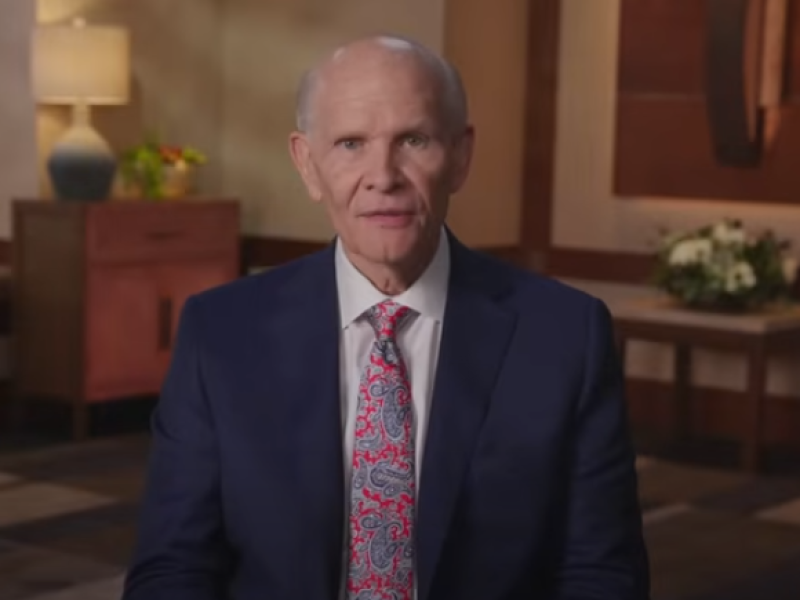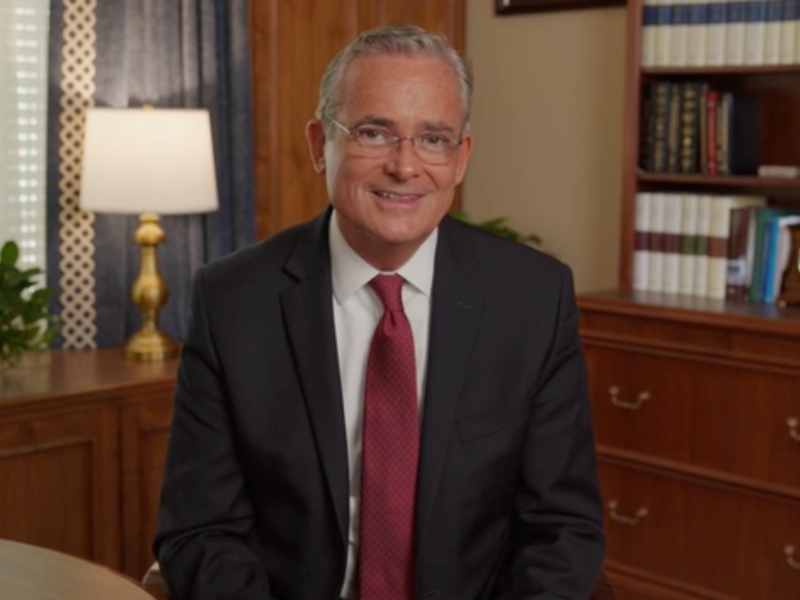Persecution in Missouri led the early saints to the swamplands of Illinois, and over a year had passed since the last recorded revelation from the Lord. Doctrine and Covenants 124 is a message to the free saints making their way in a new community. It contains blueprints for the important buildings their growing town needs, and instructions for their lives.
Sections 121–123 of the Doctrine and Covenants start with the powerful voice of a prophet crying for God. Joseph Smith knew from first hand experience that the Lord was real and he hears prayers, but he still wasn’t above feeling alone. But God was there for him in his despair, and Joseph learned from that experience. And the letters from Liberty Jail can serve as a lesson for us in good times and a boon for us when times get hard.
In Doctrine and Covenants 115 the Lord revealed that the name of the church would be The Church of Jesus Christ of Latter-day Saints. This is a name we take seriously and can take ownership in. The light of that church is to be a standard to the nations. And we have a responsibility as members of that church to be examples everywhere we go.
Section 113 is one of the distinctive sections in the Doctrine and Covenants that reads like a question-and-answer session with God. The beginning introduces us to a pattern with the revelatory formula, “Thus saith the Lord…” To better understand the context behind the questions, the Lord’s answers, and the original text in Isaiah, we invited two biblical scholars to join us on the podcast and answer a few of our own questions.
As of this week’s Come, Follow Me study, there are 208 dedicated temples of The Church of Jesus Christ of Latter-day Saints (including those in operation and those closed for renovation). Each was dedicated, and some re-dedicated, with a prayer after the pattern recorded in Doctrine and Covenants section 109. In this week’s sections, we can read the Lord’s inspired words over the first constructed temple of this dispensation, as well as the visions and miracles that took place in that holy house.
In 2019, President Russell M. Nelson encouraged all of us—but especially the women of the Church—to study the truths of priesthood power found in sections 84 and 107 of the Doctrine and Covenants. The Come, Follow Me study this week falls on that second scripture section, and we are going to take the prophet’s counsel seriously by learning all we can about the two priesthoods, their duties and responsibilities, and councils in the Church. Sections 106–108 truly testify that the blessings of the priesthood are readily available to all of God’s children.
Doctrine and Covenants 102–105 contains instructions for the Camp of Israel, later referred to as Zion’s Camp. In the summer of 1834, Zion’s Camp marched from Michigan, Ohio, and New York to assist the persecuted Saints in Missouri. Their volunteer numbers were few, but those who went learned a valuable lesson about trials and blessings. And the ending revelation to this armed march was a message to “sue for peace … to all people” (Doctrine and Covenants 105:38)
God is aware of everything you are going through right now, and He has words of comfort for us. Doctrine and Covenants 98–101 has words from God given through Joseph Smith to the Saints at Jackson County. Even though Joseph did not know the details of their trials, God did, and we can trust that He knows ours as well. So, “let your hearts be comforted” (Doctrine and Covenants 98:1), no matter what you are facing.
The Saints in 1833 were split between two Zions and were commanded to build two temples to bless God’s people. Doctrine and Covenants 94–97 makes the commandment of building temples a priority. Today, temples are still being constructed across the many places we call Zion. And for those of us not on the building committee, we can still make visiting and honoring the house of the Lord a personal priority.
Elder Renlund first suggests making sure we are doing what God has asked of us and “not something extra that we impose on ourselves.”
1 Min Read
Elder Kearon believes this truth “can console all of us.”
1 Min Read
These resources can help any family dive deeper into the Doctrine and Covenants in 2025.
1 Min Read
Doctrine and Covenants 93 contains eternal truths that overturned the traditional religious ideas of that time. While it is not the longest section of revelation by the number of verses, it is packed with doctrinal principles—from the nature of God to how we can learn about Him. The light and truth in these scriptures can illuminate the rest of the doctrine that we and the early Saints both will come to understand.
Understanding history is all in the stories of the people who lived it. This week’s Come, Follow Me study of Doctrine and Covenants 89–92 features the Word of Wisdom. But today, we’ll learn from a historian about Emma Smith, the School of the Prophets, the translation of the Bible, and the attitudes at the time toward alcohol and tobacco that colored the world when this revelation took place. We’ll also discuss a woman who lived a whole life of service around this one event in scripture.
Two days after the revelation on war given in Doctrine and Covenants 87, the Prophet Joseph Smith received a breath of fresh air with a revelation on peace in section 88. This section is known as the “olive leaf” revelation, containing eternal truths about our relationship with God and a command to draw closer to Him in a temple. We now live in the world they wished for—where temples dot the earth, and Zion can be anywhere we gather.
Jesus relays a parable in Matthew about wheat and weeds called tares. To us, these two plants can grow together and seem indistinguishable from each other. Sections 85–87 of the Doctrine and Covenants have more insight on who we are and what our job is (and isn’t) in this story.
Six years ago, in the October 2019 women’s session of general conference, President Nelson said to all the women, “I entreat you to study prayerfully all the truths you can find about priesthood power. You might begin with Doctrine and Covenants sections 84 and 107.” This week, we will be studying the first of those powerful revelations on the oath and covenant of the priesthood and how it holds truths relevant to all of God’s children.
In Doctrine and Covenants 81-83 the Lord reiterates a command to care for the poor and needy among the church. With this (and every commandment) he also gives a promise. We can learn in these sections about the nature of covenants and callings and the promises from God when we are faithful to the end.






